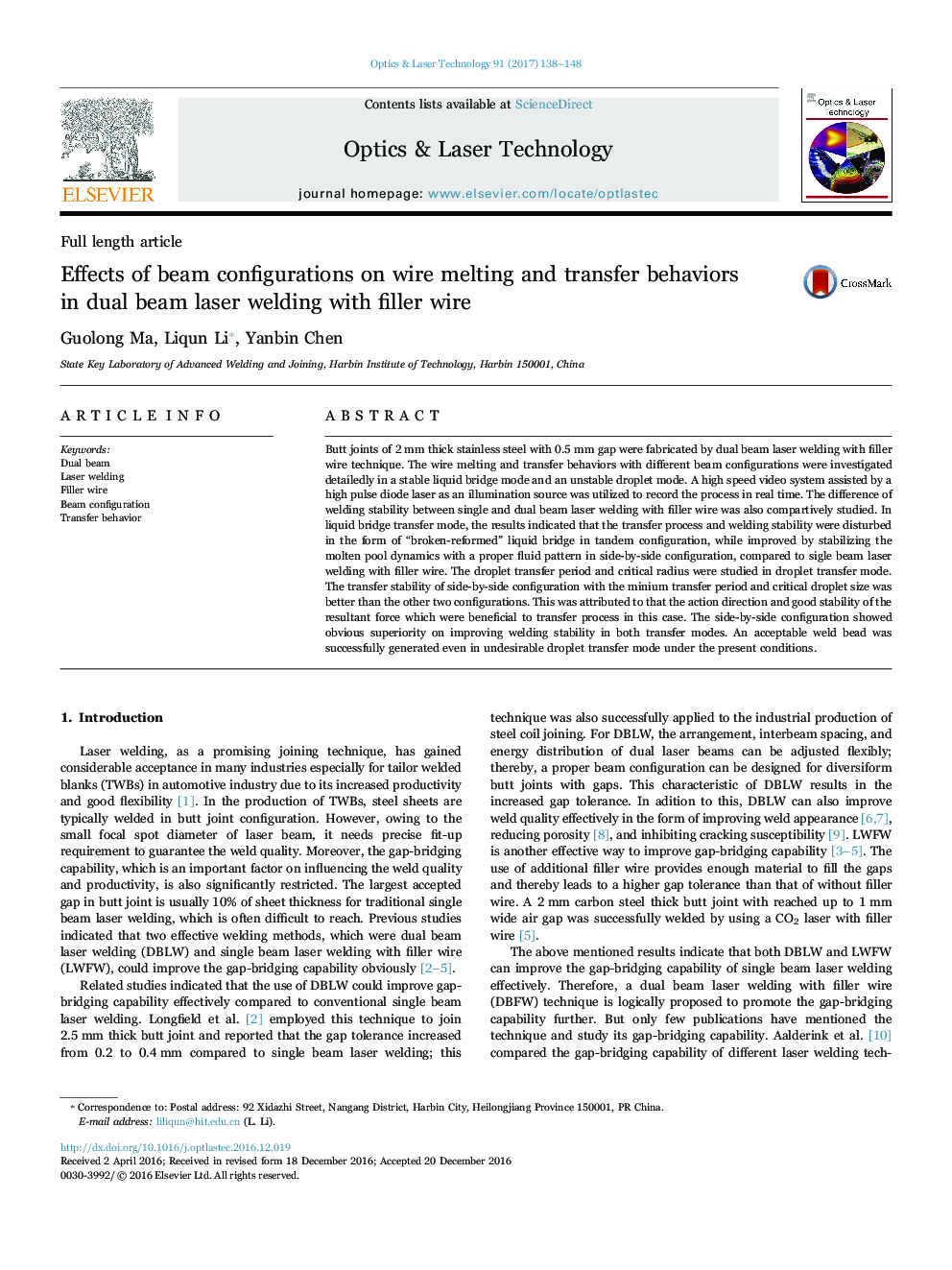| Article ID | Journal | Published Year | Pages | File Type |
|---|---|---|---|---|
| 5007167 | Optics & Laser Technology | 2017 | 11 Pages |
Abstract
Butt joints of 2Â mm thick stainless steel with 0.5Â mm gap were fabricated by dual beam laser welding with filler wire technique. The wire melting and transfer behaviors with different beam configurations were investigated detailedly in a stable liquid bridge mode and an unstable droplet mode. A high speed video system assisted by a high pulse diode laser as an illumination source was utilized to record the process in real time. The difference of welding stability between single and dual beam laser welding with filler wire was also compartively studied. In liquid bridge transfer mode, the results indicated that the transfer process and welding stability were disturbed in the form of “broken-reformed” liquid bridge in tandem configuration, while improved by stabilizing the molten pool dynamics with a proper fluid pattern in side-by-side configuration, compared to sigle beam laser welding with filler wire. The droplet transfer period and critical radius were studied in droplet transfer mode. The transfer stability of side-by-side configuration with the minium transfer period and critical droplet size was better than the other two configurations. This was attributed to that the action direction and good stability of the resultant force which were beneficial to transfer process in this case. The side-by-side configuration showed obvious superiority on improving welding stability in both transfer modes. An acceptable weld bead was successfully generated even in undesirable droplet transfer mode under the present conditions.
Keywords
Related Topics
Physical Sciences and Engineering
Engineering
Electrical and Electronic Engineering
Authors
Guolong Ma, Liqun Li, Yanbin Chen,
